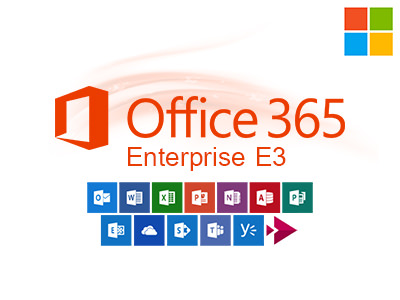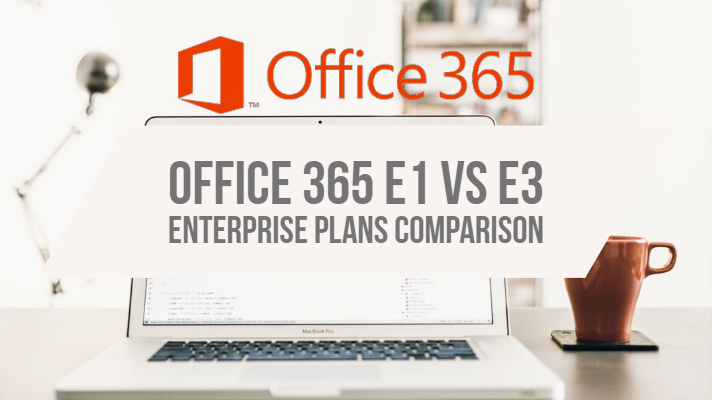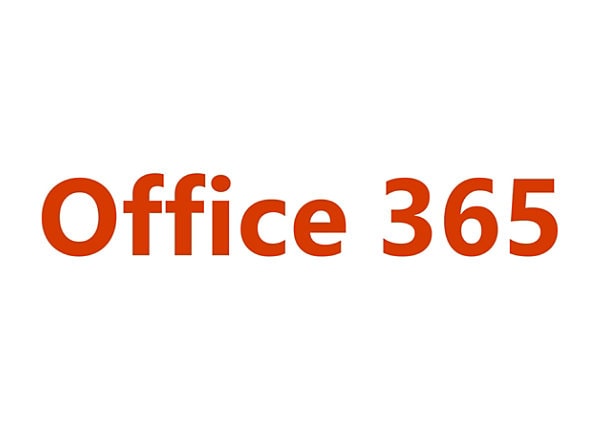- Enterprise E3 Plan
- Office 365 Enterprise E3 Vs Business Premium
- Office 365 Enterprise E3 Vs Microsoft 365 E3
Microsoft 365 Business Premium has everything you need for your small business, combining the best-in-class cloud-based productivity apps with simple device management and security that enable your employees to do their best work. In some cases, however, you may need to migrate your Microsoft 365 Business Premium subscription to Microsoft 365 E3.
For example, your business has grown and needs more than 300 licenses (congratulations, by the way).
Overall, the biggest difference between Office 365 E1 and E3 is that E3 is better for remote workers. The biggest difference between E3 and E5 is that E5 has extra security and analytics. Here’s a detailed breakdown of pricing and the key Office 365 features for each Enterprise plan: Which One Is Right for You? Office 365 E3 is a cloud-based suite of productivity apps and services with information protection and compliance capabilities included. Install Office mobile apps on up to five PCs or Macs, five tablets, and five phones per user. Protect information with message encryption, rights management, and data loss prevention for email and files.
Or, your business needs enterprise features, such as Microsoft 365 Apps for enterprise, Windows 10 Enterprise E3, or Enterprise Client Access Licenses (CALs).
Upgrading is easy: you can start the upgrade from the Admin center. All your data and configuration in your current subscription is maintained. There's nothing for you to do to prepare for the migration and nothing to do afterward, except take advantage of the new features.
Note
You can also use a Microsoft 365 Business Premium subscription for up to 300 seats and get a Microsoft 365 E3 subscription for more than 300 seats. However, Microsoft Defender for Office 365 is not included with Microsoft 365 E3. For continued threat protection, you should add additional Defender for Office 365 licenses so that all of the users in scope of your Defender for Office 365 polices are licensed.
Differences between Microsoft 365 Business Premium and Microsoft 365 Enterprise
This table shows the differences between Microsoft 365 Business Premium and Microsoft 365 E3.
| Feature | Support in Microsoft 365 Business Premium | Support in Microsoft 365 E3 |
|---|---|---|
| On-premises | ||
| Windows 10 | Windows 10 Business | Windows 10 Enterprise E3 |
| Office apps* | Microsoft 365 Apps for business | Microsoft 365 Apps for enterprise |
| Cloud productivity apps | ||
| Exchange Online and Outlook | 50 GB storage limit per mailbox and unlimited Exchange Online archiving | 100 GB storage limit per mailbox and unlimited Exchange Online archiving |
| Teams | ||
| OneDrive for Business | 1 TB storage limit per user | Unlimited |
| Yammer, SharePoint Online, Planner, Stream | ||
| Threat Protection | ||
| Attack surface reduction capabilities | See this list | Enterprise management of hardware-based isolation for Microsoft Edge |
| Defender for Office 365 Plan 1 | Not included, but can be added on | |
| Identity management | ||
| Self-service password reset for hybrid Azure Active Directory (Azure AD) accounts, Azure AD multi-factor authentication (MFA), Conditional Access, password writeback for on-premises identities | ||
| Cloud App Discovery, Azure AD Connect Health | ||
| Azure AD Office 365 apps Single Sign-On (SSO): 10 apps per user (Gallery SaaS apps such as Salesforce)* | ||
| Azure AD Premium 1 SSO: no limit (On-premises apps through Azure AD Application Proxy and non-gallery apps using Self-Service App Integration templates) | ||
| Device and app management | ||
| Microsoft Intune, Windows Autopilot | ||
| Virtual Desktop Access (VDA) | ||
| Windows Virtual Desktop (WVD) | ||
| Shared Computer Activation (SCA) | ||
| Microsoft Desktop Optimization Package | ||
| Information protection | ||
| Office 365 Data Loss Prevention, Azure Information Protection Plan 1 | ||
| Window Information Protection for endpoint DLP | ||
| Client Access License (CAL rights) | ||
| Enterprise CAL Suite (Exchange, SharePoint, Skype, Windows, Microsoft Endpoint Configuration Manager, Windows Rights Management) | ||
| Compliance | ||
| Unlimited email archiving | ||
| Compliance Manager | ||
| eDiscovery | ||
| In-place hold and litigation hold | ||
| Messaging Records Management (MRM) retention tags and retention policies |
* Users who have been assigned access to SaaS apps can get SSO access to up to 10 apps. Admins can configure SSO and change user access to different SaaS apps, but SSO access is only allowed for 10 apps per user at a time. All Office 365 apps are counted as a single app.
Migration
To migrate, work with your partner to move your Microsoft 365 Business Premium subscription and licenses to a suitable Microsoft 365 E3 subscription with its licenses.
The following sections describe what changes you need to make, if any, and what you can do after the migration.
Microsoft 365 subscription configuration and data
You don't need to make any changes to your current subscription or data before migrating, which includes:
- Subscription configuration, such as DNS domain names.
- User and group accounts and authentication settings, such as multi factor authentication or conditional access policies.
- Productivity service configurations and their data, such as Teams, Exchange Online mailboxes, SharePoint Online sites, OneDrive for Business folders, and OneNote notebooks.
Your users can now enjoy unlimited storage in the Exchange Online mailboxes and OneDrive for Business folders.
You can begin using Cloud App Discovery, Azure AD Connect Health, and SSO for more than 10 apps.
Threat protection
Windows 10 Business includes these protections:
- Integrity enforcement of operating system boot up process
- Integrity enforcement of sensitive operating components
- Advanced vulnerability and zero-day exploit mitigations
- Reputation-based network protection for Microsoft Edge, Internet Explorer, and Chrome
- Host-based firewall
- Ransomware mitigations
- Hardware-based isolation for Microsoft Edge
- Application control powered by the Intelligent Security Graph
- Device control (USB)
- Network protection for web-based threats
- Host intrusion prevention rules
Windows 10 Enterprise E3 also includes enterprise management of hardware-based isolation for Microsoft Edge.
Note
Users migrated to Microsoft 365 E3 will each require a Microsoft Defender for Office 365 license for continued threat protection. Be sure to purchase additional Defender for Office 365 licenses so that all of the users in scope of your Defender for Office 365 polices are licensed.
Device management with Intune

You don't need to make any changes to your current Intune configuration before migrating, which includes enrolled devices and device and app settings.
Windows 10
Microsoft 365 Business Premium includes Windows 10 Business, which you can install with Windows AutoPilot. When you migrate to Microsoft 365 E3, each user license includes Windows 10 Enterprise E3, which you can also install with Windows Autopilot.
Microsoft 365 Apps for business
Your Microsoft 365 Apps for business client installed on your devices will automatically begin to use the features of Microsoft 365 Apps for enterprise. After migration, you can now use:
- Group Policy support
- Spreadsheet compare and inquire
- Business intelligence
OneDrive for work and school accounts is online storage space in the cloud that's provided for individual licensed users in an organization. Use it to help protect work files and access them across multiple devices. OneDrive lets you share files and collaborate on documents, and sync files to your computer. Learn more about OneDrive features, functionality, and pricing.
OneDrive is included in Microsoft 365 and Office 365 plans, in SharePoint plans, and can also be purchased as a standalone plan.
For detailed plan information on subscriptions that enable users for OneDrive, see the full subscription comparison table and Compare OneDrive for Business plans.
Note
OneDrive standalone plans include Office for the web.
System requirements
To review the requirements for the OneDrive sync app and mobile app, see OneDrive system requirements.

Storage space per user
2 GB
- Office 365 Enterprise F3
- Microsoft 365 F1
- Microsoft 365 F3
1 TB
- Microsoft 365 Business Basic
- Microsoft 365 Apps for business
- Microsoft 365 Business Standard
- Microsoft 365 Apps for enterprise
- Office 365 Enterprise E1
- Office 365 Government G1
- Microsoft 365 Business Basic for nonprofits
- Microsoft 365 Business Standard for nonprofits
- Office 365 E1 for nonprofits
- OneDrive for Business Plan 1
- SharePoint Online Plan 1
- Microsoft 365 Business Premium
Beyond 1 TB, to unlimited

1 TB per user for subscriptions with fewer than 5 users. For subscriptions with 5 or more users (can be any combination of qualifying plans), Microsoft will initially provide 1 TB per user, which admins can increase to up to 5 TB per user. (To learn how, see Set the default storage space for OneDrive users.) To request additional storage, admins must contact Microsoft Support.
- Office 365 Enterprise E3
- Office 365 Enterprise E5
- Office 365 A1
- Office 365 A3
- Office 365 A5
- Office 365 US Government G3
- Office 365 US Government G5
- Office 365 E3 for nonprofits
- Office 365 E5 for nonprofits
- OneDrive for Business Plan 2
- SharePoint Online Plan 2
- Microsoft 365 Enterprise E3
- Microsoft 365 Enterprise E5
- Microsoft 365 A3
- Microsoft 365 A5
- Microsoft 365 US Government G3
- Microsoft 365 US Government G5
- Microsoft 365 E3 for nonprofits
- Microsoft 365 E5 for nonprofits
Note
You must assign at least one license to a user before you can increase the default OneDrive storage space.
When you need cloud storage for individual users beyond the initial 5 TB, admins can open a case with Microsoft technical support to request it. Additional cloud storage will be granted as follows:
When a user has filled their 5 TB of OneDrive storage to at least 90% capacity, Microsoft will increase your default storage space in OneDrive to up to 25 TB per user (admins may set a lower per user limit if they want to).
For any user that reaches at least 90% capacity of their 25 TB of OneDrive storage, additional cloud storage will be provided as 25 TB SharePoint team sites to individual users. Contact Microsoft technical support for information and assistance.
To see the storage space and usage for an individual user, go to Manage storage in the OneDrive sync app. To see how much storage users across the organization are using, go to the OneDrive usage report in the Microsoft 365 admin center.
Supported uses
OneDrive storage is provisioned on a per user basis and is designed to serve the needs of individual users.
Storage of data other than an individual user's work files, including system back-ups and departmental and organizational level data, is not supported, nor is the assignment of a per user license to a bot, department, or other non-human entity. SharePoint is the best solution for more advanced content management and collaboration, including storing and managing files, communications, and intranet sites across a team or organization.
OneDrive limits
To learn about file and sync limits, see SharePoint limits and Invalid file names and file types.
For plans that include unlimited cloud storage for individual users, note that limits may apply on non-storage features.
Sync features
Anyone whose plan includes OneDrive can use the OneDrive sync app unless their IT department explicitly disables it. To install the latest sync app, go to the OneDrive download page.
Unless otherwise noted, the following features are available across all plans that include OneDrive, and all OneDrive standalone plans:
- Files On-Demand for Windows 10 and for Mac
- Known Folder Move (redirect Windows known folders)
- Office desktop app integration for real-time coauthoring. Requires a subscription that includes the Office desktop apps.
Sharing and collaboration features
Unless otherwise noted, the following features are available across all plans that include OneDrive, and all OneDrive standalone plans:
- Access requests (SharePoint)
- 'Anyone' links (that can be set to require expiration)
- At mentions in comments. Requires a plan that includes Office 365 for the web or the Office 365 desktop apps.
- Manage the default sharing link (at the organization level and per site)
- Manage external sharing (at the organization level and per site or OneDrive)
- Microsoft Teams integration for files sent in chats. Requires a subscription that includes Office 365, and requires the user to be licensed for Teams.
- Modern attachments. Requires a plan that includes Outlook on the web or the Outlook desktop app.
- Restricting sharing by domain at the organization or site level
Web features
Unless otherwise noted, the following features are available across all plans that include OneDrive, and all OneDrive standalone plans:
Enterprise E3 Plan
- Copy files and folders or move them between OneDrive and SharePoint
- File card
- Help pane
- Shared by me view and Shared with me view
Mobile features
Office 365 Enterprise E3 Vs Business Premium
Unless otherwise noted, the following features are available across all plans that include OneDrive, and all OneDrive standalone plans:
- Account switching for Android and iOS
- App for Android. Not available in China.
- Camera upload on Android and iOS
- Control of device notifications
- Offline access to files or folders in Android and iOS
- PDF markup and annotations in Android and iOS
- Scan whiteboards, documents, business cards, photos in Android and iOS
Office 365 Enterprise E3 Vs Microsoft 365 E3
IT admin, security, and compliance features
For info about these features, see the SharePoint service description.
